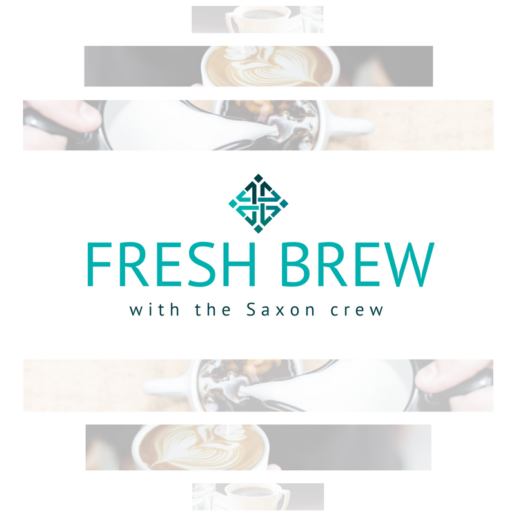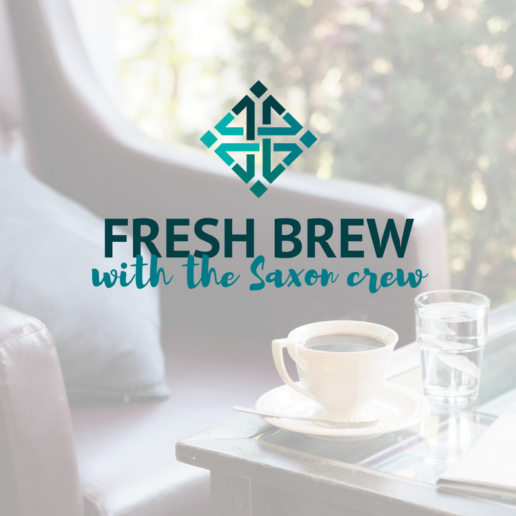How to build a multigenerational benefits strategy
Employers and HR teams are now managing workforces that stretch across three to five different generations. Continue reading this blog post to learn more about why having a multigenerational benefits strategy is important.
Employers and HR teams are managing employees for a workforce that stretches across three to five generations. This workforce is complex, and its workers have varying needs from generation to generation. That’s why a multigenerational benefits strategy is in order.
Baby boomers preparing for retirement may have an ongoing relationship with doctors and a number of medical appointments in a given year. On the other hand, millennials and members of Generation Z— the latest generation to enter the workforce — may shy away from primary care doctors and focus more on options to pay off student loans and start saving for retirement.
Given these dynamics, it’s important that two separate departments, finance and HR, need to develop a benefits strategy that keeps costs as low as possible while being useful to employees. Finance leaders understand they need to retain employees — turnover is expensive — but they’re still interested in cost containment strategies.
Employers should approach their multigenerational benefits strategy on finding a balance between cost containment and employee engagement.
Cost containment
For the first time in six years, the number of employers offering only high-deductible health plans is set to drop 9%. But the idea of employee consumerism is here to stay as employers see modest rises in health insurance premiums.

To effectively contain costs, employers should first weigh the pros and cons of their funding model. While most companies start out with fully-insured models, employers should seriously evaluate a move toward self-funding. Sure, self-funding requires a larger appetite for risk, but it provides insight into claims and utilization data that you can leverage to make informed decisions about cost containment.
One way to move toward a self-funded model is with level-funding, which allows employers the benefit of claims data while paying a consistent premium each month. In a level-funded plan, employers work with a third-party administrator to determine their expected claims for the year. This number, plus administrative fees and stop-loss coverage, divided by 12, becomes the monthly premium.
A tiered contribution model might also help to contain costs without negatively affecting employees. In a typical benefit plan, employers cover a specific percentage and employees contribute the rest — say 90% and 10%, respectively. In a tiered contribution plan, employees with salaries under a certain dollar amount pay less than those high earners. That means your employee making $48,000 pays $50, while your employee making $112,000 pays more. It’s a way to distribute the contribution across the workforce that enables everyone to more easily shoulder the burden of rising healthcare costs.
Employee engagement
To create a roadmap that not only helps you gain control of your multigenerational benefits strategy but keeps employees of all ages happy, it’s necessary to consider employee engagement. While new options like student loan repayment could be useful to part of your workforce, it’s best to start much simpler with something that affects everyone: time away from work.
A more aggressive paid time off policy, telecommuting policies and paid family leave are becoming increasingly popular. Many companies are offering PTO just for employees to pursue charitable work — a benefit that resonates with younger workers and can improve company culture. And a generous telecommuting policy recognizes that employees have different needs and shows that employers understand their modern, diverse workforce. Beyond basic time away from work, an extended leave policy outside what the law guarantees is another tool that can keep employees engaged.
Making it easier for employees to get care is another trending benefit, which can keep employees happy and contribute to cost containment. Concierge telemedicine has been called the modern version of a doctor’s house call. This relatively inexpensive benefit provides your employees access to care 24/7 by phone or video chat, which is convenient regardless of the user’s generation.
Employees and other covered individuals can connect to a doctor to discuss symptoms and get advice, whether they are prescribed a medication or they need to seek further care. This is another benefit that’s useful for young workers who may not have a primary care doctor or older workers with families.
Finally, your tech-savvy workforce expects to access their plan information wherever they need it. Ensure your carrier offers a mobile app to house insurance cards, coverage and provider information.
When it comes to a multigenerational benefits strategy, creating harmony between finance and HR might seem like a daunting task. But considering some relatively small benefit changes could be what allows you to offer a benefits package that pleases both departments — and all of your employees.
This article originally appeared in Employee Benefit News.
SOURCE: Blemlek, G. (26 February 2019) "How to build a multigenerational benefits strategy" (Web Blog Post). Retrieved from https://www.employeebenefitadviser.com/opinion/how-to-build-a-multigenerational-benefits-strategy?brief=00000152-146e-d1cc-a5fa-7cff8fee0000
Younger generations driving lifestyle benefits
Millennials will make up seventy-five percent of the U.S. workforce by 2025, according to a study by Forbes. The self-confidence of younger generations is pushing companies to adopt more non-traditional benefits. Continue reading to learn more.
Younger generations are often characterized as entitled and demanding — but that self-confidence in their work is pushing companies to adopt benefits outside the traditional healthcare and retirement packages.
By 2025, millennials will make up 75% of the U.S. workforce, according to a study by Forbes. The first wave of Generation Z — millennials’ younger siblings — graduated college and entered the workforce last year. With these younger generations flooding the workplace, benefit advisers need to steer clients toward innovative benefits to attract and retain talent, according to panelists during a lifestyle benefits discussion at Workplace Benefits Renaissance, a broker convention hosted by Employee Benefit Adviser.
“Millennials came into the workforce with a level of entitlement — which is actually a good thing,” said Lindsay Ryan Bailey, founder and CEO of Fitpros, during the panel discussion. “They’re bringing their outside life into the workplace because they value being a well-rounded person.”
Catering benefits to younger generations doesn’t necessarily exclude the older ones, the panelists said, in a discussion led by Employee Benefit Adviser Associate Editor Caroline Hroncich. Older generations are accustomed to receiving traditional benefits, but that doesn’t mean they won’t appreciate new ones introduced by younger generations.
“Baby boomers put their heads down and get stuff done without asking for more — that’s just how they’ve always done things,” Bailey said. “But they see what millennials are getting and are demanding the same.”

In a job market where there are more vacant positions than available talent to fill them, the panelists said it’s important now, more than ever, to advise clients to pursue lifestyle benefits. While a comprehensive medical and retirement package is attractive, benefits that help employees live a more balanced life will attract and retain the best employees, the panelists said.
“Once you’ve taken care of their basic needs, have clients look at [lifestyle benefits],” said Dave Freedman, general manager of group plans at LegalZoom. “These benefits demonstrate to workers that the employer has their back.”
The most attractive lifestyle benefits are wellness centered, the panelists said. Wellness benefits include everything from gym memberships, maternity and paternity leave, flexible hours and experiences like acupuncture and facials. But no matter which program employers decide to offer, if it’s not easily accessible, employees won’t use it, the panel said.
“Traditional gym memberships can be a nightmare with all the paperwork,” said Paul O’Reilly-Hyland, CEO and founder of Zeamo, a digital company connecting users with gym memberships. “[Younger employees] want easy access and choices — they don’t want to be locked into contracts.
Freedman said brokers should suggest clients offer benefits catered to people based on life stages. He says there are four distinct stages: Starting out, planting roots, career growth and retirement. Providing benefits that help entry-level employees pay down student debt, buy their first car or rent their first apartment will give companies access to the best new talent.
To retain older employees, Freedman suggests offering programs to help employees buy their first house, in addition to offering time off to bond with their child when they start having families. The career growth phase is when most divorces happen and kids start going to college, Freedman said. Offering legal and financial planning services can help reduce employee burdens in these situations. And, of course, offering a comprehensive retirement plan is a great incentive for employees to stay with a company, Freedman said.
Clients may balk at the additional costs of implementing lifestyle benefits, but they help safeguard against low employee morale and job turnover. Replacing existing employees can cost companies significant amounts of money, the panelists said.
“Offering these benefits is a soft dollar investment,” Freedman said. “Studies show it helps companies save money, but employers have to be in the mindset that this is the right thing to do.”
SOURCE: Webster, K. (25 February 2019) "Younger generations driving lifestyle benefits" (Web Blog Post). Retrieved from https://www.employeebenefitadviser.com/news/younger-generations-driving-lifestyle-benefits?brief=00000152-1443-d1cc-a5fa-7cfba3c60000
4 FAQs about W-2 business email compromise attacks during tax season
Has your business been a victim of tax season cyber attacks? The most popular time of the year for W-2 related cyber attacks is during tax season. Read this blog post to learn more.
The most likely cyber attack a company will face will come in the form of an email. One of the most common forms of email attack is the business email compromise (BEC), and the most popular time of the year for the W-2 version of BEC is right now — tax season.
A BEC attack involves attackers sending emails disguised as coming from high-level executives within a company, such as the CEO, to lower level personnel. During tax season, the spoof email will often request that W-2s for employees be provided by return email.
While the email looks identical to the executive’s email, it is coming from — and then returned to — the criminal, not the executive, along with the W-2s and the personal information associated with the documents.
If an employee falls for the scam, the company now has experienced a serious data breach and must comply with certain legal requirements. Worse yet, the company’s employees’ sensitive personal information has been given to the attackers and they have this problem to worry about instead of performing their job. The disruption is substantial in their personal lives and for the company’s operations.
How do attackers use W-2 information?
In most cases, once the attackers have that W-2 information, they use it to attempt to file fraudulent tax returns for those employees and have their tax refunds sent to them instead of the employee. They also use it for traditional identity theft.
The attackers act very quickly once the information is obtained. In some cases, they have begun to fraudulently use the information on the same day they obtained the W-2 information from the company. Time is truly of the essence in responding to these attacks and legal assistance is necessary for properly responding to these data breach events.
Why do so many attacks happen during tax season?
Law enforcement officers and cybersecurity professionals report a drastic increase in these types of attacks during the beginning of each year because of tax season. This is consistent with what is seen in helping companies with these cases in past years, as well. The reason this type of attack is so common during tax season is because of the tax-related fraud aspect of this type of attack. That is, the attackers monetize their attacks by using the fraudulently obtained information to file fraudulent tax returns and obtain refunds from innocent victims.
And the sooner they can do this, the better their chances are of getting the refund before the taxpayer files and receives their tax refund.
If a company has not yet been targeted, it is likely that it will be very soon so it is important to be prepared.
What can you do to protect your company?
Educating employees is critical because they will be the ones who receive the emails from the attackers.
- Make them aware of this issue by sharing the information in this article with them so that they understand the threat, how it works and how it could affect them personally.
- Train them by having appropriate personnel discuss this threat with them and help them understand that they should be very suspicious of any requests to email out anything of this nature (or make payments, such as with the very similar wire transfer version of the BEC).
Have appropriate internal controls in place to protect against these types of attacks. These controls can include:
- Limit who has access to your company’s W-2s and other sensitive information as well as who has the authority to submit or approve wire payments.
- Have established procedures in place for sending W-2 information or other sensitive information as well as for submitting or approving wire payments so that dual approvals are required for these activities.
- Require employees to use an alternative means of confirming the identity of the person making the request. If the request is by email, the employee should talk to the requestor in-person or call and speak to the requestor using a known telephone number to get verbal confirmation. If the request is by telephone or fax (many times they are), then use email to confirm by using an email address known to be correct to confirm with the purported requestor. Never reply to one of these emails or call using a telephone number that is provided in one of these emails, faxes, or telephone calls.
What to do if your company is hit by an attack
- Immediately contact experienced legal counsel who understands how to guide a company through these incidents and, ideally, has appropriate contacts with law enforcement and the IRS to assist in reporting this incident quickly.
- Report the incident to the FBI or Secret Service and appropriate IRS investigators so that the IRS can implement appropriate procedures to protect the employees whose information was exposed in the W-2s.
- Prepare appropriate notifications to the people whose information was exposed and comply with all legal and regulatory reporting requirements. This should be a part of an existing incident response plan. Companies should have such a procedure in place to be better prepared if and when a security breach occurs.
- Inform employees that the IRS will never contact them directly, for the first time, via email, telephone, text message, social media or any way other than through a written “snail mail” letter.
SOURCE: Tuma, S. (19 February 2019) "4 FAQs about W-2 business email compromise attacks during tax season" (Web Blog Post). Retrieved from https://www.benefitspro.com/2019/02/19/4-faqs-about-w-2-business-email-compromise-attacks-during-tax-season/
What Happened to Employee Retirement Plan Education?
As an employer, you are the universal platform for your employees’ benefits and retirement knowledge. Every day, you must communicate and educate your employees on the benefits you offer. Whether that is through verbal communication, an office chatroom, or a simple email, you should act as a bridge between the gap that is, “What do I get for working here? How am I protected? How can I contribute to my savings?”

There is no doubt how much pressure this puts on your shoulders. When it comes to educating your employees about their 401(k) Plan, it is inevitable that you may feel lost. You don’t have anyone to advise you on the topic (except Google, of course); you have no proper guide for navigating the benefits and retirement landscape. How can you provide the best resources and tools to your employees, if you don’t have access to them to begin with?
In this month’s installment of CenterStage, we spoke with Todd Yawit, Director of Employer-Sponsored Retirement Plans at Saxon Financial Services, hoping to scope helpful advice for employers struggling with benefits and retirement education. The conversation led to a prime focus on the power of 401(k) Plans, and employees’ extreme lack of knowledge about them, and ended with this simple fact:
Providing access to A to Z retirement services for your employees is not something you should skip on; and could lead to lower health insurance premiums in the long-run.
“Too many Americans are getting to their retirement age with no funds or no ability to provide the extra income they’re going to need over and above Social Security,” Todd said. “There needs to be a mechanism or tool available for people to save money, preferably tax-favored treatment of that money.”
That tool is a 401(k) Plan. Providing 401(k) Plan education in the workplace is an easy way for employers to show they care about their employees’ futures. It gives employees opportunities to save for their retirement, ultimately bettering themselves and their loved ones in the long run.
Getting Familiar With 401(k)s
People by nature tend to stick to the rule, “Out of sight, out of mind,” and 401(k) Plans are the epitome of that rule. However, this is the wrong path to take. 401(k) Plans can be a great tool for employers to leverage.
“At Saxon, we highly suggest employers look at advanced plan designs, instead of just a basic 401(k) Plan,” said Todd. These plan designs can lead to better retirement-readiness of plan participants, which will better prepare them for retirement, and can potentially lower health insurance premiums for the business in the long-run. Todd continued, “Advanced plan designs may also increase business tax deductions; provide better benefits for business owners and key employees; and eliminate most discrimination tests.
Automatic Enrollment
Once an employee becomes eligible for a 401(k) Plan, they are automatically enrolled in one. This tool helps increase enrollment in the Plan, because studies have shown few employees “opt-out” once they are automatically enrolled.
There has been a push for employers to add Automatic Enrollment to their 401(k) Plans. Participation has been at an all-time low, meaning more and more employees are getting to retirement with nothing to rely on except their Social Security. Automatic enrollment, and employee education can be great tools to help employees reach their retirement-readiness.
Automatic Increases in 401(k) Contributions
When employees do get involved with their 401(k) Plans, it’s usually with the initial set up, then it’s often forgotten about. Knowing how crucial those savings are for employees’ future livelihoods, there has been a push for automatic increases in annual 401(k) contributions.
“Ongoing education will help employees understand how small increases in their retirement savings, especially when they get a raise, will have a big impact on their ability to retire at a reasonable age”, Todd explained.
Saxon Financial Advisors
Saxon Financial Services offers A to Z retirement plan services for Simple IRAs, Safe Harbor 401(k) Plans, 401(k) Plans, 403(b) Plans, and Cash Balance Pension Plans. Saxon can act as a 3(38) Investment Manager, which can reduce the employer’s fiduciary liability with respect to investment selection, monitoring, and replacement. We can create and manage custom asset allocation models for participants in this role as well. “This allows employees to focus on what really matters, saving for retirement and not worrying about picking and managing their investments”, Todd concluded.
If you currently struggle with the education and support of your 401(k) Plan, then call 513.573.0129 or email Todd at tyawit@gosaxon.com.
Fresh Brew with Deborah Raines
Welcome to our segment, Fresh Brew, where we explore the delicious coffees, teas, and snacks of some of our employees! You can look forward to our Fresh Brew blog post on the first Friday of every month.
“I always try to anticipate the needs of the producer that I work for.”
Deborah Raines is an Account Manager at Saxon Financial Services. Deborah has been in the financial industry for over five years. She has worked as a customer service representative and as an assistant to a financial representative at a financial company.
When not working, she enjoys spending time with her husband and her daughter Rebecca and exploring all of the different restaurants in Cincinnati. Deborah also loves to travel, some of her favorite travel spots include the beaches in North and South Carolina and busy streets of London, where she studied at the University of Westminster for a semester of college.


Chai Latte from Starbucks
Deborah loves a hot or cold Chai Latte from Starbucks.

Deborah isn’t much of a snacker when she’s sipping on her
favorite brew.
Millennials and money — How employers can be a financial literacy resource
Recent reports show student loan debts reached a $1.5 trillion crisis in 2018, leading many to believe Americans need a little help with money. Read on to learn how employers can help with financial literacy.
It’s clear that Americans need a little help with their money — in 2018 student loan debts reached a staggering $1.5 trillion crisis, employees continue to retire at a later age every year, and studies have shown that 65% of Americans save little to nothing of their annual income.
One subset of the American population that has even greater troubles with their finances is millennials, or those aged 23 to 38 as of 2019. This age group has lofty goals — 76% believe that they’re headed for a better financial future than their parents and 81% plan to own a home — but many millennials aren’t saving money in a way that actually leads them towards that future. In the last year, 43% of young adults had to borrow money from their parents to pay for necessities and 30% had to skip a meal due to lack of funds. Where’s the disconnect between millennials’ financial optimism and the reality of their financial circumstances?
Part of the problem lies in a lack of financial literacy. A study conducted by the National Endowment for Financial Education found that only 24% of millennials answered three out of five questions correctly on a survey looking at financial topics, indicating only a basic level of literacy. This same survey found that only 8% of millennials who took the test were able to answer all five questions correctly.

That’s not to say that understanding the intricacies of financial planning is easy. Everything from taxes to investing often requires professional advice. It’s no wonder that millennials are struggling with their finances: only 22% of those in this age group have ever received financial education from an educational institution or workplace. Millennials are struggling to pay for basic necessities and financial advice is simply not a priority. Many avoid seeking the help they need because they perceive it to be too costly.
This is an opportunity for employers that want to provide valuable resources to their employees, as financial wellness programs are likely to be the next employee benefit that millennials ask for.
Right now, millennials are the largest segment in the workforce, and by 2030 the U.S. Bureau of Labor Statistics estimates that this age group will make up a staggering 75%. In a tight labor market, current job seekers can be more selective when deciding where they want to work. For employers, studies have shown that 60% of people report benefits and perks as a major deciding factor when considering a job offer.
To stand out from competitors and provide true value to young employees, companies should consider including financial wellness plans in their overall benefits package. The most comprehensive financial wellness plans generally include access to advice from a certified financial planner in addition to legal, tax, insurance and identity theft support. For millennials trying to get in control of their finances, these types of programs can be invaluable. For example, young employees can get assistance setting up a 401(k) account, dealing with taxes for the first time or learning to save and invest.
In 2019 and beyond, millennials are going to be looking for employers that support them not only in the office but outside the office as well. By providing financial planning tools in the workplace, companies can be a valuable resource to younger employees who will appreciate early and frequent conversations around how to manage their money.
SOURCE: Freedman, D. (19 February 2019) "Millennials and money — How employers can be a financial literacy resource" (Web Blog Post). Retrieved from https://www.benefitnews.com/opinion/how-employers-can-be-a-financial-literacy-resource?brief=00000152-14a7-d1cc-a5fa-7cffccf00000
Everything employers need to know about employee job classifications
FLSA job classifications can confuse even the most experienced HR managers. Continue reading this blog post for everything employers should know about employee job classifications.
Chief among the issues that keep employers up at night is staying compliant with federal and state employment laws.
Arguably, wage and hour rules are the most complex and cause the most issues for companies. Job classifications under the FLSA can confuse even the most experienced HR managers.
In fact, some of the costliest wage and hour lawsuits and penalties on record could have been avoided if only the employer properly classified an employee as either exempt or nonexempt. It’s critically important to understand the law — and the devil is in the details.
Exempt or nonexempt?
Most employers understand that an exempt employee is not entitled to receive overtime pay for hours worked in excess of forty hours per week, according to the provisions of the FLSA. Conversely, nonexempt employees are required to receive overtime pay and should be classified as nonexempt from these same overtime provisions.
While it may sound straightforward, figuring out an employee’s exempt status is not that simple. Different types of exemptions exist and each has its own unique set of requirements that are outlined in the FLSA. Most of these exemptions are specific to certain jobs or industries, for example, some exemptions only apply to specific types of agricultural workers, or to truck drivers who transport goods in interstate commerce. But for most businesses, exempt employees will usually fall into one of the following three exemption categories: executive, administrative and professional. Collectively, these are referred to as the white collar exemptions.
A common error that employers make is to classify all their salaried employees, or all employees with the word manager in their title, as exempt. Neither of these factors alone is enough to make the exempt designation. Each of the white-collar exemptions has two components: a salary requirement and a duties requirement. The salary requirement is the same for each of the three exemptions, but the duties requirements are different.
The salary basis test
For any employee to be considered exempt under any of the white-collar exemptions, they must be paid on a salary basis. This means that any employee who is paid by the hour, per day, or is commission-only, regardless of their title or position, will not meet the criteria for any of the white-collar exemptions. How the salary is paid as well as the amount are also subject to certain restrictions. The salary basis test determines the minimum amount, which is subject to change from time to time. The minimum salary is currently $455.00 per week (or $23,660 per year). This test also provides restrictions on when and how an employer can make deductions from an exempt employee’s salary.
An increase to the minimum salary per week from $455 to $913 (or $47,476 per year) was originally scheduled to go into effect back in December 2016, but industry groups against the measure successfully lobbied to block it. The U.S. Department of Labor is exploring alternatives that could appease these industry groups while keeping the regulations in line with the times. The DOL is scheduled to re-start the rulemaking process in March 2019, and prior statements of the current DOL Secretary, Alexander Acosta, suggest that the new rule may propose a more modest salary increase to around $634 per week (or around $33,000 per year).
Job duties
In addition to the salary, each white-collar exemption has its own unique set of duties requirements. Employers must look at the actual duties that each employee performs to determine whether they meet the criteria and their title or position does little to influence the outcome. So, simply naming an employee a manager does not automatically qualify the worker as an exempt employee. To be considered exempt under the executive exemption, which is the most common exemption for managers, this employee would need to supervise two or more full-time employees (or the equivalent) and have the authority to hire and fire employees. Otherwise, they would need to meet the requirements for one of the other exemptions to be paid in this manner.
Knowing that these regulations exist and being well-informed of the framework is the first step in understanding overtime obligations – and reducing wage and hour worries. Employers should seek a qualified employment law attorney for additional guidance on the specifics of each requirement to ensure compliance with applicable overtime laws.
SOURCE: Starkman, J.; Nadal, A. (15 February 2019) "Everything employers need to know about employee job classifications" (Web Blog Post). Retrieved from https://www.benefitnews.com/opinion/what-employers-need-to-know-about-job-classifications?brief=00000152-14a5-d1cc-a5fa-7cff48fe0001
LinkedIn’s job search feature gets smart
LinkedIn is planning on simplifying their process of finding and hiring talent via their recruitment features. The platform plans on consolidating their LinkedIn Recruiter, Jobs and Pipeline Builder products into one service. Continue reading to learn more.
LinkedIn plans to simplify the process of finding and hiring talent through upgraded recruitment features this summer.
The career platform will consolidate its LinkedIn Recruiter, Jobs and Pipeline Builder products into one service — the Intelligent Hiring Experience — to streamline the recruitment process for its corporate customers. Artificial intelligence algorithms will help talent recruiters find the most suitable candidates for open positions.
“[The] update is about how we can make those tools work even better by fostering collaboration and more efficient sourcing,” says John Jersin, vice president of Product for LinkedIn Talent Solutions and Careers. “We’ve started along this path by bringing more intelligence into our platforms, to ensure our products are working together optimally, and helping both companies and job seekers more easily zero in on the best opportunities.”
With the upgrade, messages between recruiters and potential talent can be shared with HR professionals and hiring managers. The platform also allows the recruiter and corporate hiring team to exchange notes on each job candidate. Recruiters who rely on LinkedIn to discover talent are optimistic the upgrades will make the hiring process more organized.
“I think that would be a great feature,” says Aimee Aurol, talent acquisition specialist for Acuris Group, a media company. “Hiring managers can get a better idea of what I’m doing as a recruiter, and I can see which candidates are moving along in the process.”
Aurol says LinkedIn is her primary tool for identifying and contacting candidates for her company. While the majority of her job placements come from LinkedIn, she says the platform’s candidate suggestions could use improvement. At its current state, Aurol’s candidate searches often turn up the same candidates over and over. But she hopes the updated AI will direct her to a wider variety of available talent.
And Jersin says it was designed to do just that.
“All of these tools are created to help learn your interests and surface the right candidates,” he says. “When a recruiter reaches out to a specific candidate, or a job seeker applies for a role, our AI algorithms take note, matching profiles with job descriptions and highlighting top recommendations.”
LinkedIn’s AI will also take into consideration whether previously suggested candidates were hired or not as it adjusts its personalized algorithm. To help the algorithm learn your company’s preferences, Jersin recommends setting up projects for each available role. Then, go through suggested candidates and save the ones you want to contact — and hide the ones that don’t fit.
Once a candidate is hired, the upgrades allow hiring managers to send rejection letters individually, or in mass. This part of the upgrade was designed to improve the hiring experience for both job applicants and employers.
“We believe applicants will appreciate knowing the outcome of their contact with your company — and it's bad business to leave applicants hanging,” Jersin says. “…one survey showed that over 40% of candidates said that if they don’t hear back from a company they’ll never apply to it again.”
While the upgrades are scheduled to debut in late summer, Jersin says LinkedIn will slowly introduce the new features over the next couple of months. The feature will be included in LinkedIn’s Recruitment and Job Slots membership packages; existing customers will not have to pay additional fees to access the service.
“The new features will make it simple for recruiters to simply keep doing their sourcing and hiring while inadvertently training our algorithms to learn more about their preferences,” Jersin says.
SOURCE: Webster, K. (20 February 2019) "LinkedIn’s job search feature gets smart" (Web Blog Post). Retrieved from https://www.benefitnews.com/news/linkedin-introduces-intelligent-hiring-experience-platform?brief=00000152-14a7-d1cc-a5fa-7cffccf00000
How employers can take advantage of the best-kept wellness secret
How can you take advantage of insurance companies’ best-kept secret? Some insurance carries pay wellness dollars to companies who implement wellness programs. Read on to learn more.
Did you know some insurance carriers pay companies to implement wellness programs? It’s called wellness dollars, and it is insurance companies’ best-kept secret.
Wellness dollars are a percentage of a company’s premiums that can be used to cover wellness-related purchases. The healthier employees are, the fewer dollars insurance carriers need to pay out for a policy. Many insurers have incentives like wellness dollars for employers to improve the well-being of their workers.
The benefits of adding a wellness program are plenty. These programs typically generate a positive return on investment for companies. Research done by three Harvard professors found that overall medical costs decline $3.27 for every dollar spent on wellness programs. Costs from absenteeism fall about $2.73 for each dollar. Well-designed programs can improve employees’ overall wellbeing and life satisfaction, according to a report from the U.S. Chamber of Commerce.
It’s a new year, and group health insurance plans are starting fresh. Here’s how employers can take advantage of wellness dollars.
Get in touch with your carrier. The first step is to get in touch with your insurance carrier to find out if your self-insured or fully-insured plan covers participatory or health-contingent programs. If you don’t have wellness dollars, it’s still early in the year, and it’s worth negotiating to see if you can include them in your company’s current package.
You will work with your insurance carrier to determine how your wellness dollars can be spent, based on an agreed-upon contract. The amount of wellness dollars that you receive depends on the number of employees and profitability.
Every company is different, so the range of services varies and could include wellness programs, gym memberships, nutrition programs, massages and more. Sometimes incentives for wellness activities can be used; sometimes it can’t. Ask your carrier for a complete list of covered expenses. This will help you as you shop around to find the right offerings. Save receipts and records for reimbursements.
Determine the best use. There are a few ways to determine what offerings you should use for your company. Before making any decisions, ask your employees and the leadership team what type of program they would be most likely to engage in. Gallup named the five elements that affect business outcomes: purpose, social, community, physical and financial. Look for a comprehensive program that includes these five elements, instead of coordinating with multiple vendors. If only a portion of your expenses will be reimbursed, it’s still worth getting a wellness program. They have cost-savings on an individual and team level.
Wellness programs are all about building culture, and with unemployment at a record low, it’s a sticking point to keep employees invested in your company. A few examples of wellness offerings include fitness classes, preventive screenings, on-site yoga, financial wellness workshops, healthy living educational workshops, and health tracking apps.
Once you’ve implemented wellness offerings in your workplace, keep track of your company’s progress. Create a wellness task force, a healthy workplace social group, or conduct monthly survey check-ins to make sure employees are staying engaged. Some wellness programs utilize technology to track participation, integrate with wearables, and report other analytics. Ask your insurance carrier if wellness dollars have flexibility in adding or changing the services throughout the year, based on engagement.
SOURCE: Cohn, J. (14 February 2019) "How employers can take advantage of the best-kept wellness secret" (Web Blog Post). Retrieved from https://www.benefitnews.com/opinion/how-employers-can-take-advantage-of-the-best-kept-wellness-secret
Goodbye group benefits. Hello personalized pay
Do you offer a uniform benefits package to your employees? With five generations in the workplace now, off-the-shelf benefit options are presenting employers with a challenge. Read this blog post to learn more.
In the past, it was typical for a company to provide all employees with access to the same group benefits — regardless of their age, demographics or education level. From health insurance to retirement plans and paid time off, these uniform benefit packages were designed to meet the needs of the entire workforce in one fell swoop.
But over the past few years, these off-the-shelf benefit options have presented a bit of a challenge. With five generations now in the workplace — Gen Z, Millennials, Gen X, Baby Boomers and the silent generation — there are diverse expectations about pay and benefit packages.
For example, baby boomers and the silent generation tend to value health insurance and a robust retirement plan. Meanwhile, Gen X workers seek a healthy work-life balance, advancement opportunities and a competitive 401(k) — or a retirement savings plan that lets you set aside and invest money from your paycheck, to which your employer can then contribute. Millennials and Gen Z prioritize flexibility — they want more paid time off, the ability to work when and where they wish and tuition reimbursement.
There is no one-size-fits-all compensation package that can fairly satisfy each generation of workers. Employees today want to feel heard, understood and cared for by their employer. Furthermore, most want a job that fits with their personal interests and lifestyle.

As a result, companies are moving away from traditional group benefits and taking a more personalized approach to compensation.
Many organizations are using social listening tools, focus groups and surveys to gather information about the types of benefits employees want. Others are taking it a step further and having one-on-one conversations to determine what motivates each individual worker and provides them with a sense of purpose at work. How else will we know what, specifically, each employee wants unless we ask them?
By collecting this information, organizations can tailor packages that effectively meet the varying wants and needs of the diverse workforce. They’re offering mixes of pay, bonuses, flex time, paid time off, retirement plans, student loan repayment assistance and professional growth opportunities. Some companies have designed an a la carte menu of benefits, with which employees can pick and choose the perks they care most about.
According to a recent survey conducted by WorldatWork and KornFerry, organizations also are offering more non-traditional benefits that can further acknowledge employees’ concerns and responsibilities outside of work. Eldercare resource and referral services, women advancement initiatives and disaster relief funds all became significantly more prevalent in employee benefits programs within the last year. Telemedicine, identity theft insurance and paid parental leave offerings increased as well.
And many organizations are taking innovation one step further. One firm recently introduced a new benefits reward program in which employees earn points based on both personal and company-wide achievements and then cash them in for perks across various categories: health and wellness, travel, housing, transportation, time off, annual grocery passes — you name it. The purpose is to give employees the power to choose the types of perks that mean the post to them.
Personalized pay can boost attraction and retention
The unemployment rate is the lowest it’s been in decades, and the war for talent is extremely tough. The average tenure for workers is 4.6 years. For millennials, it’s half that.
This sort of high employee turnover can take a massive toll on a company’s bottom line: Experts estimate that it can cost up to twice an employee’s salary to recruit and train a replacement. Not to mention, employee churn can damage company morale and tarnish your company’s reputation.
Customized pay and benefits plans can make an employer be more attractive in a tight, crowded job market. If you want to not only attract top talent but retain them as well, it’s worth taking the time to understand what matters to your candidates and offering them personalized pay and reward packages.
Organizations need to introduce more flexibility into their pay packages and adapt to the needs of the changing workforce. After all, when you invest in your employees, you invest in the overall success and performance of your business.
This article originally appeared in Employee Benefit News.
SOURCE: Wesselkamper, B. (11 February 2019) "Goodbye group benefits. Hello personalized pay" (Web Blog Post). Retrieved from https://www.employeebenefitadviser.com/opinion/tailored-employee-benefit-plans-gaining-popularity













